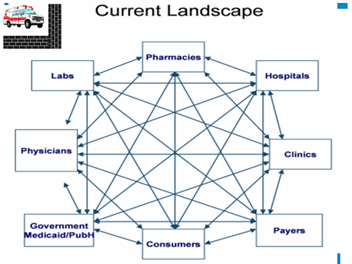EMSA's Experience Getting EMS Connected to the Healthcare System
I became really passionate about health information exchange (HIE) about 8 years ago
Was this information valuable?

I became really passionate about health information exchange (HIE) about 8 years ago. HIE is defined in its purest form as mobilization of healthcare information electronically across the region or community. The more I learned about it, the more I realized it will be a game changer in healthcare in the U.S. as it has in other places in the world. First, a bit about me. I work as the Chief Information Officer of EMSA a public/private organization that receives more than 170,000 calls per year between Oklahoma City and Tulsa metropolitan areas. We have more than 500 providers that transport about 150,000 patients per year. We have seen significant increases in our volumes over the past decade with lots of change happening around us in the healthcare ecosystem.
At the start of the digital revolution of healthcare data, only the payors were fully embracing it. Once the payors started forcing our (providers) hand, things started taking off. The payors had a real treasure trove of information on patients. However, their mission wasn’t the overall improvement in healthcare for the patient. From an EMS perspective, this is what it looked like. We were literally stuck behind a brick wall.
We didn’t get to talk to anybody because nobody wanted to hear what we had to say (mainly because they really didn’t understand the part our information plays in the healthcare continuum). That’s what inspired us to get started. Our standard process for getting patient care reports to hospitals and other providers was through printing at the hospital, faxing, courier pigeon (OK, maybe that’s a stretch), no longer made sense to me.
In 2008, a group came together in Tulsa to say this is a not only a problem, but also something that could really help to facilitate access to health data, provide faster safer more cost effective, patient center healthcare. MyHealth, our current local HIE was born at the grass roots level with a special focus on connecting doctors’ offices all across the state with a focus on improving lives across the state for diseases such as diabetes, cardiac health and many others. What made this unique at the time was that the payors were at the table too. In the infancy of HIE, providers were very skeptical of having payors involved, but at MyHealth, there value has proven itself time and time again. For us being able to see patient demographics was great, but if I can put it on a computer that my paramedics have access to in the field, that’s a real game changer!
Currently, we’re one of three EMS agencies in Oklahoma connected to MyHealth. We share our patient care data with the HIE through the ePCR product itself via an HL7 CDA EMS run report. Through our connection to the HIE, we also have access to patient medical history.
Here are a few of our examples where access to this important health information matters. Sometimes we don’t have the information that we need to provide appropriate care. Through the exchange our medics can access patient medical history. Here’s one of our early examples of a trip where access mattered.

Even when patients are alert and responsive, medics don’t always get the full account of a patient’s medical history. In addition to changing what care medics provide, it has also influenced the destination of patients multiple times.

Access to HIE’s really benefits all members. However, all HIE’s are different. In our area, MyHealth has an attribution model. This means that information about a patient is attributed to various providers. For instance, information on a patient transported to a local hospital will be accessible within that hospital facility or to a physician that has seen the patient recently only. The HIE is developing and testing a process for notifying physicians (those attributed to the physician and have opted to receive notifications) of important medical events (tests completed, prescriptions filled, ambulance transports, hospital or ER admissions, etc.) as another means of keeping the physicians in touch with what is happening with the healthcare of their patients.
By integrating the data from our ePCR with the healthcare system we have done something truly valuable. For example, if we treated and released a diabetic patient by waking them up 6 times with some glucose is that patient really in control of their disease? If it wasn’t for our connection to the HIE, the rest of the healthcare system would have no knowledge of those treatments.
That’s the biggest reason why we pushed to get connected once we started seeing the bigger picture. Some of you get this today and think this is important and others may not yet agree there is a reason to get connected. We are all part of healthcare whether you think of yourselves as public health, public safety or something else entirely. Go ahead and get your service integrated and start your journey today by finding out more about HIE in your area.
Related Posts
ZOLL Pulse Blog
Subscribe to our blog and receive quality content that makes your job as an EMS & fire, hospital, or AR professional easier.
ZOLL Pulse Blog
Subscribe to our blog and receive quality content that makes your job as an EMS, fire, hospital, or AR professional easier.




